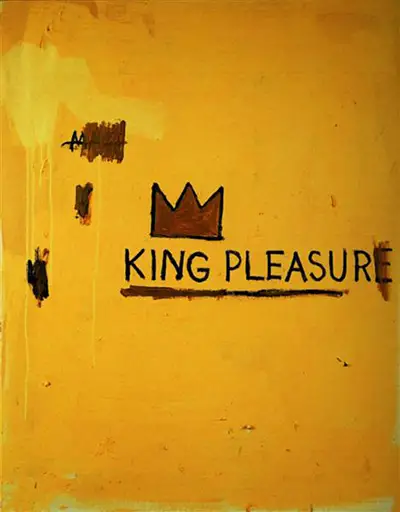The lettering dominates the centre of the composition, with a rough underline added below the words. A crown, typical of the artist, is then placed just above and the rest of the artwork is covered in yellow paint with some rough flourishes typical of th graffiti movement. Basquiat loved to use crowns as a means to symbolising kings and queens within modern society, far away from their traditional use within historical monarchies. They were therefore used to signify power and wealth within celebrity culture and a desire to alter the concentration of wealth as it stood at that time. Western society was highly influenced by its links to colonial rule and many aspects of modern life still had roots in the past, even though they were more subtle than previously would have been the case. Those outside of the caucasian community were probably more able to spot these signs, and Basquiat would add elements of this into his own work.
Graffiti art would be the latest iteration of Western art and was another chapter in an ever-evolving region who had made a major impact to global art. They had taken in ideas from elsewhere, and this would become more frequent during periods of trade at which point different cultures would naturally become more exposed to different ideas. Cubism, for example, was influenced by African art, whilst the Impressionists and Post-Impressionists regularly looking into Japanese art for ideas. Basquiat again could combine different cultures to create his own unique approach and this fusion would prove particularly popular as it also helped to change hearts and minds, and to focus people's attention on topics that they may not have thought about before.
Typically, artists would bring new ideas into the art world have faced barriers, going all the way back to the Renaissance. The best of these innovators, though, will tend to find ways to succeed, and eventually their methods will spread into the mainstream and Basquiat can be considered some who did precisely that. Today he remains a highly significant painter who represented a community which was under-exposed at the time, particularly in the traditional art scene, though New York helped to move things forward and start to make the industry a little more representative of the population as a whole, particularly those living in the major cities.


